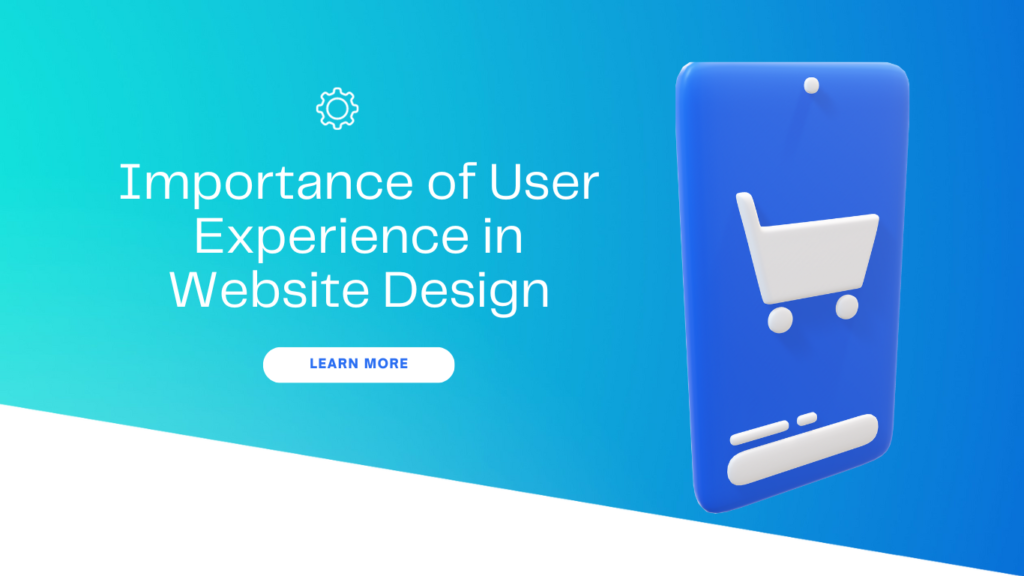Importance of User Experience (UX) in Website Design
User experience (UX) refers to how a user interacts with and experiences a company’s website or mobile app. It encompasses all aspects of the end-user’s interaction, including how they find the site, how they navigate through it, how easy or difficult it is to use, and how pleased or annoyed they are with the overall experience.
For consulting firms offering services online, UX is crucial for conveying expertise, building trust, and encouraging potential clients to get in touch. With so many firms competing for attention, a website with poor UX stands little chance of converting visitors. On the other hand, an intuitive, seamless website experience sets a consultancy apart.
Importance of User Experience in Website Design
User experience (UX) refers to how users interact with and perceive your website or app. It includes all aspects of the end-user’s journey, including:
- How they find your site
- How easily they can navigate it
- How quickly they can find what they need
- How the site engages and resonates with them
For any business today, UX is critical for making a positive first impression online, building credibility, and encouraging visitors to engage further. Here are key reasons why UX matters:

Elements of User Experience Design
UX design considers both visual design and information architecture. Some key elements include:
Easy Navigation
The site must have an intuitive navigational structure so visitors can find what they need. This includes:
- A visible, clickable homepage logo to return users to the home page.
- Clear, concise navigation menus that make sense to visitors.
- Linked internal pages so users can easily go deeper into site content.
- Prominent calls-to-action so people know what to do next.
Page Layout
Page layout impacts how easily users can digest content. Best practices include:
- Organizing information using headings, short paragraphs, bullets, and whitespace.
- Grouping related content together.
- Using consistent page elements and themes throughout the site.
Readability
Copy must be readable, concise, and scannable for online viewing. Recommendations:
- Use short sentences in active voice.
- Format content using lists, subtitles, and images.
- Limit paragraphs to 3-4 sentences.
- Use a font size between 14 and 16 pixels.
- Limit the number of fonts and font colors.
Visual Design
A site’s look and feel influences users’ perceptions and behavior. Visual design should:
- Use color strategically to draw attention, communicate brand identity, and categorize information.
- Ensure high color contrast between text and background for readability.
- Use recognizable, relevant images to enhance messaging and break up text.
- Maintain stylistic consistency across pages.
Performance
Site performance significantly impacts UX. A slow, buggy site will drive visitors away. Tips for performance:
- Optimize images to reduce file sizes.
- Minimize HTTP requests through effective caching and compression.
- Serve resources from a content delivery network (CDN).
- Eliminate render-blocking JavaScript.
Why UX is Critical for Consulting Firms
For consulting firms, a website is often the first touchpoint between a potential client and the business. The website experience shapes prospects’ perceptions of the firm’s capabilities and influences whether they make contact. Positive UX design can help in several ways:
Building Trust and Credibility
A polished, user-friendly website design instills confidence in visitors and establishes credibility for the consultancy. Site visitors will interpret a thoughtful UX as a signal of the firm’s professionalism and competence.
Conveying Expertise
An intuitive site architecture and design showcases a firm’s UX design expertise. For a consultancy promoting its abilities, the website itself serves as a powerful demonstration of its skills.
Improving SEO
Search engine optimization (SEO) helps users find a site through search engines like Google. UX best practices like keyword optimization, quality content, and fast performance improve SEO. Higher rankings lead to more organic traffic.
Guiding Users to Conversion
UX removes friction from user journeys. Visitors are more likely to fill out contact forms, download resources, sign up for demos, or reach out for services if they can easily find these calls-to-action.
Generating Positive Word-of-Mouth
Users appreciate websites that save them time and effort. They’ll be more inclined to recommend firms with simple, seamless sites that quickly connect them to relevant information and service offerings.
UX Design Process and Methodology
UX design should follow a strategic process rooted in understanding user behaviors, expectations, and needs. Key phases include:
User Research
The first step is learning about target users through methods like interviews, surveys, analytics review, and user testing. User research identifies pain points to address and desired website goals. Ongoing research provides insight into whether the current UX is effective.
Information Architecture (IA)
Next, information architects organize content and functionality into intuitive navigational schemes and layouts. IA connects business goals with user needs to provide the right content in each place users will look for it.
Wireframing and Prototyping
Before aesthetic design begins, wireframes lay out page structure, interface elements, and interaction flows. Prototypes then simulate page functionality for user testing. This testing further refines the UX design.
Visual Design
With wireframes and IA established, visual designers apply branding, stylistic themes, images, color schemes, typography, and graphics to shape the look and feel. The visual interface brings the wireframes to life.
Development and Testing
The design process concludes by coding and implementing the interfaces using web languages like HTML, CSS, and JavaScript. Rigorous testing across devices and browsers identifies technical issues prior to launch.
Post-Launch Analysis
Post-launch, user testing and data analytics provide ongoing feedback about real-world UX. Teams tweak and refine the design based on usage data and changing user needs.
Optimizing UX for Consulting Websites
Here are some key UX optimization tips for consulting websites:
Promote Your Differentiators
Ensure your distinct competitive advantages are clear on each page. Showcase specialty areas, boutique services, awards, client outcomes, and other differentiators upfront.
Spotlight Expertise
Bios, headshots, credentials, thought leadership, and case studies help visitors get to know consultants and build trust.
Guide Visitors to Relevant Pages
Menus, calls-to-action, visible contact options, and structured URL paths (e.g. domain.com/service-name/) make it easy for visitors to navigate to the most relevant pages.
Speak to Common Buyer Questions
Address typical questions prospects have at each stage of their buyer journey: awareness, consideration, decision. Answer concerns through content.
Share Client Stories
Spotlights on client challenges, the firm’s approach, and results achieved are persuasive. But obtain permission before sharing confidential details.
Reduce Bounce Rates
Many visitors will only view one page. Ensure above-the-fold content explains key services and convinces visitors to explore further.
Testing and Optimizing Ongoing Performance
The work does not stop once the initial website design goes live. Ongoing testing and optimization are critical. Useful approaches include:
Website Analytics
Measure traffic volumes, acquisition channels, landing pages, bounce rates, conversion funnel dropoff, and other metrics. Analyze changes over time.
Session Recordings
Watch real user sessions to identify usability sticking points like confusing navigation, unclear calls-to-action, or page elements that drive visitors away.
Surveys
Asking for customer feedback via online surveys provides qualitative data about the site experience. Gauge satisfaction, understand pain points, and learn improvement ideas.
A/B Testing
Try variations of pages to see what designs perform best. Test changes to navigation, page layouts,Calls-to-action, images, headlines, or content.
Technical Performance
Page speed, mobile responsiveness, and error rates impact UX. Use tools like PageSpeed Insights and Pingdom to ensure optimal performance.
Search Analytics
See what visitors search for on your site and if they find it. Identify terms that show high demand but low supply from site content.
Frequently Asked Question
1. What is User Experience (UX) in website design?
User Experience (UX) in website design refers to the overall experience that a user has when interacting with a website. It encompasses everything from how the site looks and feels to how easy it is to navigate and find information.
2. Why is User Experience important in website design?
User Experience is crucial because it directly impacts user satisfaction, engagement, and conversion rates. A positive UX can lead to increased traffic and better brand perception.
3. What are the key elements of a good User Experience on a website?
Key elements include intuitive navigation, fast loading times, responsive design, clear content presentation, accessibility, and user-friendly interactions.
4. How can I improve the loading speed of my website for a better UX?
You can improve loading speed by optimizing images, using efficient code, leveraging content delivery networks (CDNs), and minimizing server requests.
5. What role does responsive design play in UX?
Responsive design ensures that a website adapts seamlessly to various screen sizes and devices, providing a consistent and user-friendly experience across platforms.
6. What is the significance of mobile-friendly design for UX?
With a growing number of users accessing websites on mobile devices, a mobile-friendly design is essential for providing a positive UX and retaining visitors.
7. How can I make my website more accessible to users with disabilities?
Implement accessible design practices, including proper heading structure, alternative text for images, keyboard navigation, and compliance with web accessibility guidelines (WCAG).
8. What is the importance of user testing in UX design?
User testing involves gathering feedback from actual users to identify usability issues and make informed design improvements, resulting in a more user-centric website.
9. How can I create intuitive navigation for my website?
Organize content logically, use clear labels and menus, employ breadcrumbs, and ensure that users can easily find what they’re looking for with minimal clicks.
10. What are some UX design best practices for e-commerce websites?
Best practices include a streamlined checkout process, high-quality product images, informative descriptions, user reviews, and clear calls-to-action.
Conclusion
User experience remains a top priority long after a consulting website launches. Consistent UX research, design, testing, and improvement are key to staying ahead of client expectations. When web experiences consistently resonate with target audiences, consulting firms are better positioned to build credibility, highlight expertise, and win new business. A focus on UX ultimately helps transform website visitors into happy clients.














